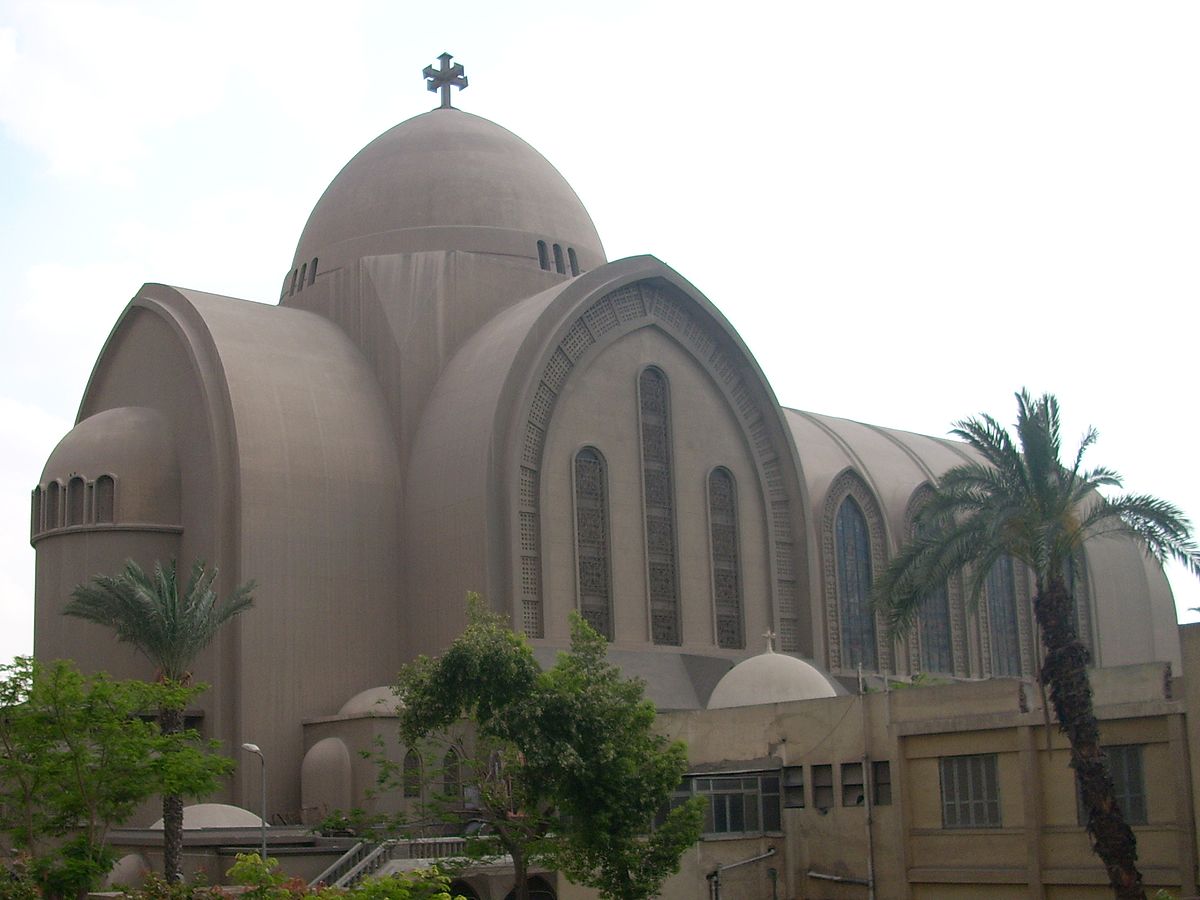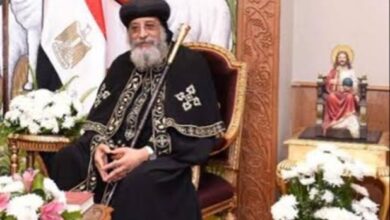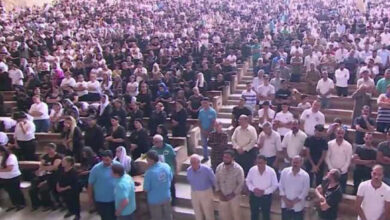Camillia Shehata is a Coptic Christian woman who “saw the light of truth” and wanted to convert to Islam, but was forcibly prevented from doing so by Egyptian authorities. She was arrested and locked away in a monastery, forever the hostage of the Coptic Church.
Camillia Shehata is a just another woman who fled her home due to domestic troubles and mistreatment by her husband, a priest, and only the Egyptian authorities can locate the woman. The church knows nothing of her whereabouts. Shehata has not converted to Islam.
Two starkly different scenarios, each believed and advocated by one of the two prevalent faith groups in Egypt.
For independent observers, Shehata is perhaps another riddle–a question that may be left unanswered or worse “a case which speaks of the malaise that has been spreading and eating the heart out of this society,” as Coptic writer and journalist Youssef Sidhom put it in statements to Al-Masry Al-Youm.
“Camillia is not the problem, she’s just a symptom of an illness that our religiously sensitive society is suffering from,” said Sidhom, his tone carrying a sense of desperation.
Shehata, in her early twenties and the wife of a Coptic preacher, had earlier left her home in the southern city of Minya and her only child behind so that, reportedly, she can live as a Muslim. She went missing for five days before she was found by authorities. During those days, Christians demonstrated unabated in front of a church in Minya, then marched to a cathedral, demanding that Shehata be returned–something that Sidhom said was an unwise and exaggerated reaction to a mere woman’s disappearance, and another sign of growing distrust between Christians and Muslims.
Conflicting reports have surfaced regarding the details of how Shehata was found and why she left her house to begin with. Some reports, particularly on Islamist websites, go as far as claiming that she had already converted secretly a few years earlier. Those reports posit she sough Muslims for help, was chased by authorities, and then found in a mosque minutes before she was supposed to declare her official conversion. A previously unknown Muslim preacher, under the alias of Abu Yahia, has been speaking to tabloids and Islamist websites claiming he had met Shehata and was with her when she was arrested. He swears that she was “completely Muslim.” These stories remain hearsay.
Sidhom said he believed the case is spiraling out of control and that, out of responsibility, “if the Church is indeed keeping her in custody, they should release her to the world so that Camillia can declare her desire and free will openly. If she’s not, then Camillia herself should be responsible and reasonable enough to come out, talk to the media in a press conference and rest her case.”
Under the current circumstances, “whoever is keeping Camillia is playing with fire,” Sidhom added.
Kamil Sadiq, member of the Supreme Council of Alexandria’s St. Mark’s Church, the seat of the Coptic Pope, told Al-Masry Al-Youm, however, that the Christians’ reaction is a product of numerous cases where Christian young women went missing without their families knowing, while authorities kept cover on them in compliance.
“Take this story of a mother in Mansoura whose two underage daughters went missing. For months she kept looking for them and the authorities claimed they didn’t know their whereabouts,” said Sadiq. “Desperate she spoke to television channels, and in a live broadcast, she beseeched President Hosni Mubarak to find her daughters. In 24 hours, they were found. It turned out they had converted to Islam and were married to Muslims. It’s not about conversion in this case. It’s about how the security apparatus had refused to assuage the pain of a mother who didn’t know where her daughters were. Clearly, their whereabouts was known, but why wasn’t the mother told before the president intervened? This is what creates distrust.”
A week earlier, a large, rowdy crowd of Muslims protested after evening prayers in front of the Nour mosque in Abbassiya carrying pictures of the “convert to Islam,” and calling for her “return to the Muslim community.” The small posters and banners had Shehata’s picture in a full black veil that only keeps the face visible and carried the words, “I’ll die a Muslim.”
An Islamist lawyer Mamdouh Ismail, in addition to others, is spearheading an initiative to compel authorities to “order a search into Christian places of worship” where Shehata is believed to have been hidden after reportedly being handed over to church officials by police authorities last month. Ismail has filed a petition to the Egypt’s general prosecutor embodying this request. He has also, among others, filed a lawsuit claiming that Shehata is held in a monastery or a church somewhere against her will and that Pope Shenouda should be obliged to divulge her whereabouts by law.
“It’s about laws and constitution and the need of the state to intervene in order to impose them,” Mamdouh had told Al-Masry Al-Youm earlier suggesting the “church’s authority needs to be curbed and the state’s authority reinstated in such cases.”
The Arabic Network for Human Rights information has also demanded last week for “the fate of Camillia Shehata” to be released, during an international day dedicated to those who “disappeared.” The Cairo-based rights group believed she’s being incarcerated in a Christian place of worship “which is considered abduction punishable by law and is a case of involuntary disappearance criminalized by the UN,” their website reads.
Shehata now has an “official” website (http://www.kamiliashehata.com) run by Muslims detailing their version of the ordeal. The same website carries an editorial by Islamist writer Gamal Sultan describing both Pope Shenouda and the Coptic church’s handling of the case as “arrogant” and saying Shenouda “secretly mobilizes and incites his followers [to strike]” and that “there has never been systematic destruction of relations between Muslims and Coptic Christians ever since the French invasion [of Egypt] as there is now under the rule of Pope Shenouda.”
Islamic blogs have also popped left, right and center deeming Shehata a “victim of church oppression” and blaming the state for failing to give her protection. The websites carry pictures of Camilia in a full veil, where only her face is showing. Sidhom suggested that perhaps the picture is manipulated using image software such as Photoshop.
Shehata, on these websites, is also considered a “victory case” in a country where tensions between conservative Christians and Muslims have been flaring, and where ostensible signs of “piety”, including veils, face veils, beards, crosses, have mushroomed. And where building a mosque by a church, and vice versa, is perhaps not a matter of either tolerance or bad planning but of blatant defiance. “It’s like a competition of who attracts more people,” said Sidhom.
The scenario brings to memory a similarly fiery and controversial case from 2004, where Wafaa Constantine, then 48 and also wife of a priest, was believed to have converted to Islam and was held back by her family and the church. Hordes of Christians demonstrated in anger, claiming that Constantine was kidnapped and “brainwashed” into converting to Islam. Some went on hunger strikes, riot police and worshipers clashed, and arrests were made. The whole episode was handled clumsily by authorities who didn’t seem to know how to control the rage that Pope Shenouda provoked by sending himself into seclusion at a monastery in Wady el-Natrun, where he refused to speak to the press.




